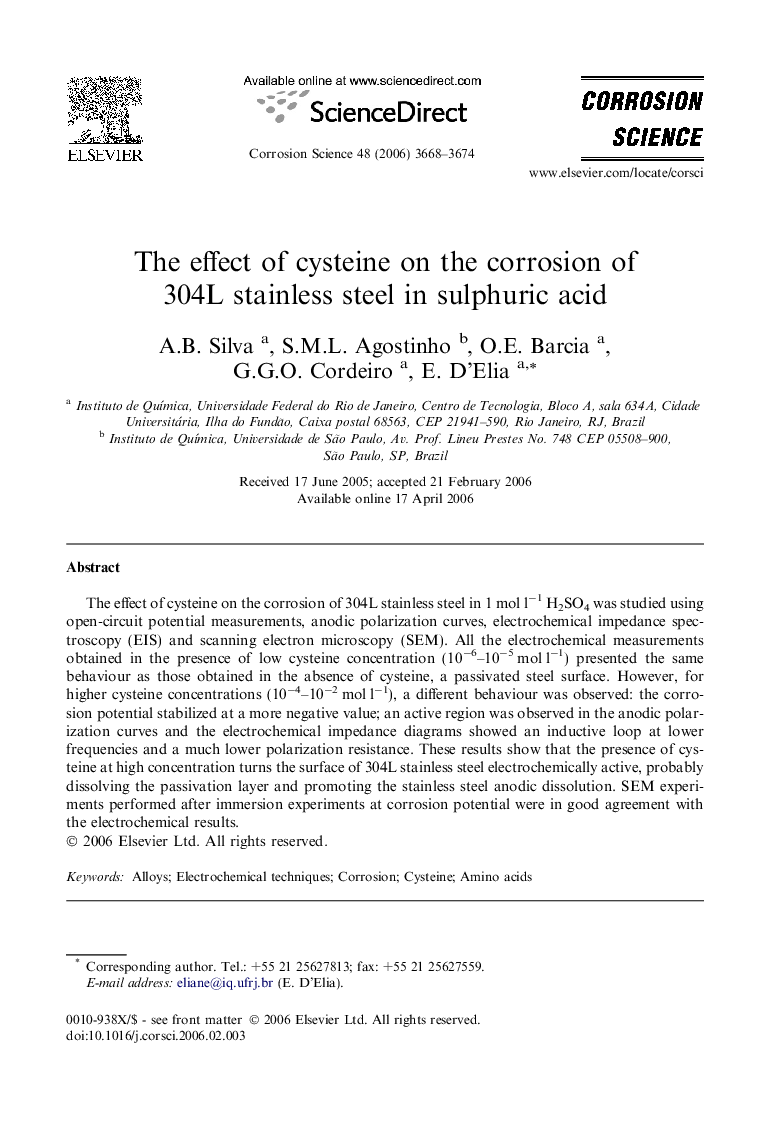| Article ID | Journal | Published Year | Pages | File Type |
|---|---|---|---|---|
| 1472311 | Corrosion Science | 2006 | 7 Pages |
The effect of cysteine on the corrosion of 304L stainless steel in 1 mol l−1 H2SO4 was studied using open-circuit potential measurements, anodic polarization curves, electrochemical impedance spectroscopy (EIS) and scanning electron microscopy (SEM). All the electrochemical measurements obtained in the presence of low cysteine concentration (10−6–10−5 mol l−1) presented the same behaviour as those obtained in the absence of cysteine, a passivated steel surface. However, for higher cysteine concentrations (10−4–10−2 mol l−1), a different behaviour was observed: the corrosion potential stabilized at a more negative value; an active region was observed in the anodic polarization curves and the electrochemical impedance diagrams showed an inductive loop at lower frequencies and a much lower polarization resistance. These results show that the presence of cysteine at high concentration turns the surface of 304L stainless steel electrochemically active, probably dissolving the passivation layer and promoting the stainless steel anodic dissolution. SEM experiments performed after immersion experiments at corrosion potential were in good agreement with the electrochemical results.
